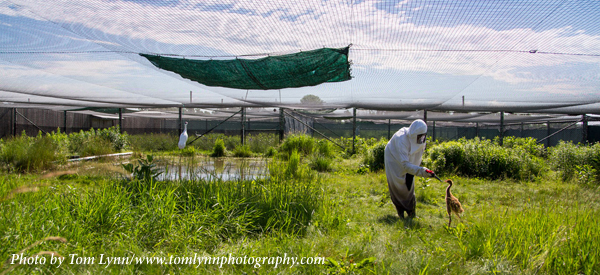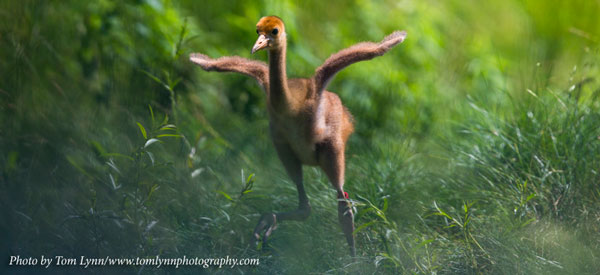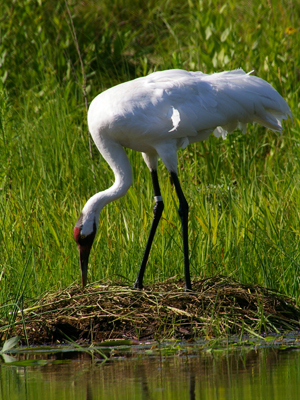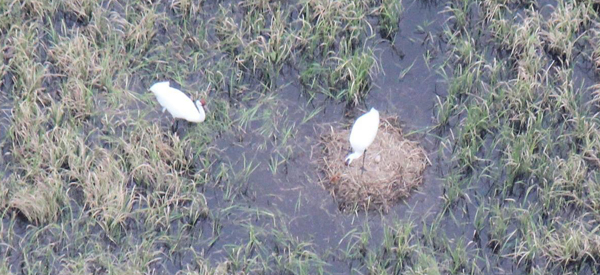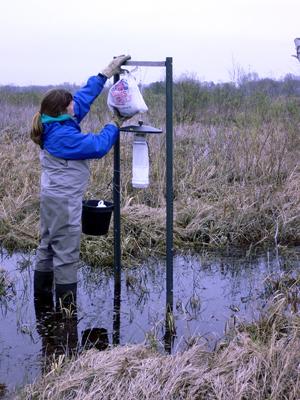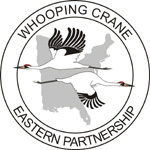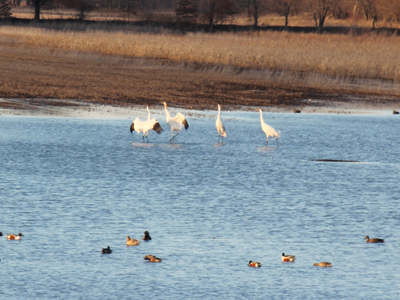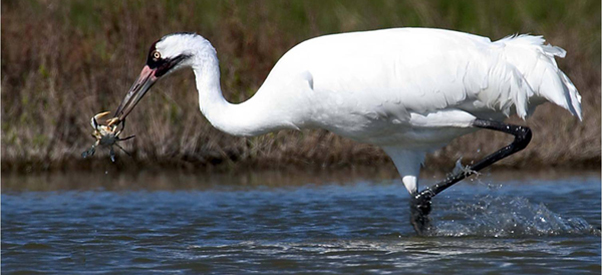 Have you been following Tom Lynn Photography’s project “From Hatch to Release”? Tom is Smithsonian Magazine’s Instagram guest photographer this week, and he will be sharing images of the Whooping Crane reintroduction project on their site throughout the week!
Have you been following Tom Lynn Photography’s project “From Hatch to Release”? Tom is Smithsonian Magazine’s Instagram guest photographer this week, and he will be sharing images of the Whooping Crane reintroduction project on their site throughout the week!
Category: Whooping Crane
ICF's Whooping Crane Chicks Cast for Critical Role in the Wild
 The International Crane Foundation (ICF) has nine Whooping Crane chicks for this year’s Direct Autumn Release (DAR) Program, a release method that relies on older Whooping Cranes to lead the chicks south in the fall. ICF is one of only five captive breeding centers in the world focused on raising endangered Whooping Cranes for release into the wild.
The International Crane Foundation (ICF) has nine Whooping Crane chicks for this year’s Direct Autumn Release (DAR) Program, a release method that relies on older Whooping Cranes to lead the chicks south in the fall. ICF is one of only five captive breeding centers in the world focused on raising endangered Whooping Cranes for release into the wild.
Nests & Eggs!
 ICF’s captive Whooping Cranes are laying eggs and the wild Whooping Cranes are nesting in Wisconsin. Breeding season is here!
ICF’s captive Whooping Cranes are laying eggs and the wild Whooping Cranes are nesting in Wisconsin. Breeding season is here!
An Insider’s View into the World of Raising Endangered Whooping Crane Chicks
 With a population of less than 600 Whooping Cranes in the world, the International Crane Foundation (ICF) is one of four captive breeding centers raising Whooping Cranes for release into the wild. Captive breeding has become an essential part of saving this endangered species, and through a web camera ICF is inviting you to see a day in the life of a Whooping Crane chick and the dedicated people that care for them.
With a population of less than 600 Whooping Cranes in the world, the International Crane Foundation (ICF) is one of four captive breeding centers raising Whooping Cranes for release into the wild. Captive breeding has become an essential part of saving this endangered species, and through a web camera ICF is inviting you to see a day in the life of a Whooping Crane chick and the dedicated people that care for them.
Wild Whooping Crane Chick Hatches in Central Wisconsin
 The Whooping Crane Eastern Partnership (WCEP) is celebrating another success in its efforts to reintroduce a wild migratory Whooping Crane population in eastern North America. A Whooping Crane chick hatched yesterday in Marathon County, Wis.
The Whooping Crane Eastern Partnership (WCEP) is celebrating another success in its efforts to reintroduce a wild migratory Whooping Crane population in eastern North America. A Whooping Crane chick hatched yesterday in Marathon County, Wis.
ICF Launches National Whooping Crane Environmental Ed Program
 ICF recently launched an initiative to develop a National Whooping Crane Environmental Education program. This program, aimed at 4th – 8th grade students, teachers, families, and the general public, will involve interactive multi-media tools to engage people in Whooping Crane conservation. We started this work in Texas through a partnership with Hamline University’s Center for Global Environmental Education and Texas A&M University-Corpus Christi’s Harte Research Institute for Gulf of Mexico Studies.
ICF recently launched an initiative to develop a National Whooping Crane Environmental Education program. This program, aimed at 4th – 8th grade students, teachers, families, and the general public, will involve interactive multi-media tools to engage people in Whooping Crane conservation. We started this work in Texas through a partnership with Hamline University’s Center for Global Environmental Education and Texas A&M University-Corpus Christi’s Harte Research Institute for Gulf of Mexico Studies.
Partnership Study on Nesting Success of Eastern Migratory Whooping Cranes
 Black flies may be responsible for a high number of Whooping Cranes abandoning their nests in the core reintroduction area in central Wisconsin. To test this hypothesis, the Whooping Crane Eastern Partnership (WCEP), the coalition of public and private groups that is reintroducing Whooping Cranes to eastern North America, has been conducting a multi-year study to examine the causes of nest abandonment.
Black flies may be responsible for a high number of Whooping Cranes abandoning their nests in the core reintroduction area in central Wisconsin. To test this hypothesis, the Whooping Crane Eastern Partnership (WCEP), the coalition of public and private groups that is reintroducing Whooping Cranes to eastern North America, has been conducting a multi-year study to examine the causes of nest abandonment.
Whooping Crane Eastern Partnership Annual Report
 Since 2001, the Whooping Crane Eastern Partnership (WCEP), an international coalition of public and private agencies, has been working to establish a self-sustaining migratory population of Whooping Cranes in eastern North America. Read more to download the WCEP 2012 Annual Report.
Since 2001, the Whooping Crane Eastern Partnership (WCEP), an international coalition of public and private agencies, has been working to establish a self-sustaining migratory population of Whooping Cranes in eastern North America. Read more to download the WCEP 2012 Annual Report.
2013 Whooping Crane Spring Migration and First Nests!
 Spring is here, with over 80 Whooping Cranes confirmed in Wisconsin and the first wild nests of the season!
Spring is here, with over 80 Whooping Cranes confirmed in Wisconsin and the first wild nests of the season!
Ruling in Favor of The Aransas Project in Whooping Crane Case
 The International Crane Foundation is “whooping it up” after a historic Court ruling in favor of the citizen suit filed by The Aransas Project against the Texas Commission on Environmental Quality to protect the last naturally migrating flock of Whooping Cranes.
The International Crane Foundation is “whooping it up” after a historic Court ruling in favor of the citizen suit filed by The Aransas Project against the Texas Commission on Environmental Quality to protect the last naturally migrating flock of Whooping Cranes.

